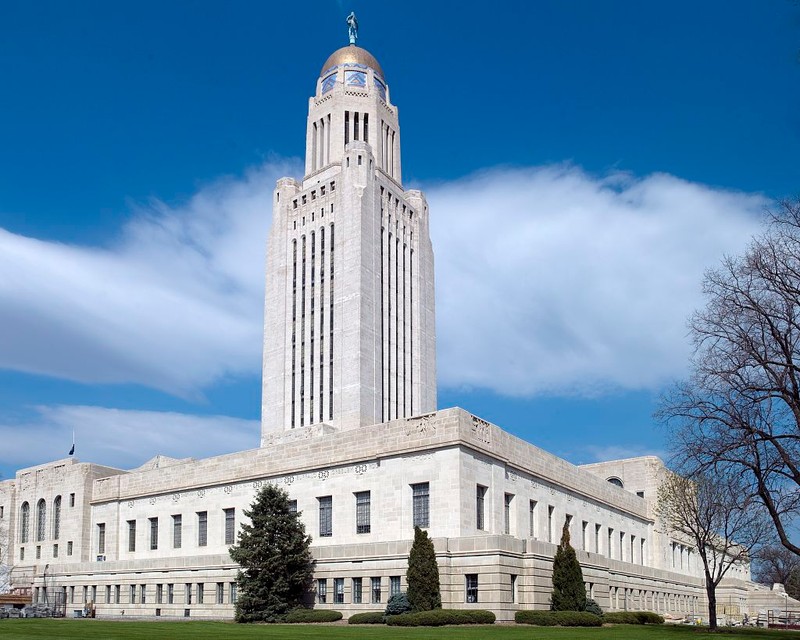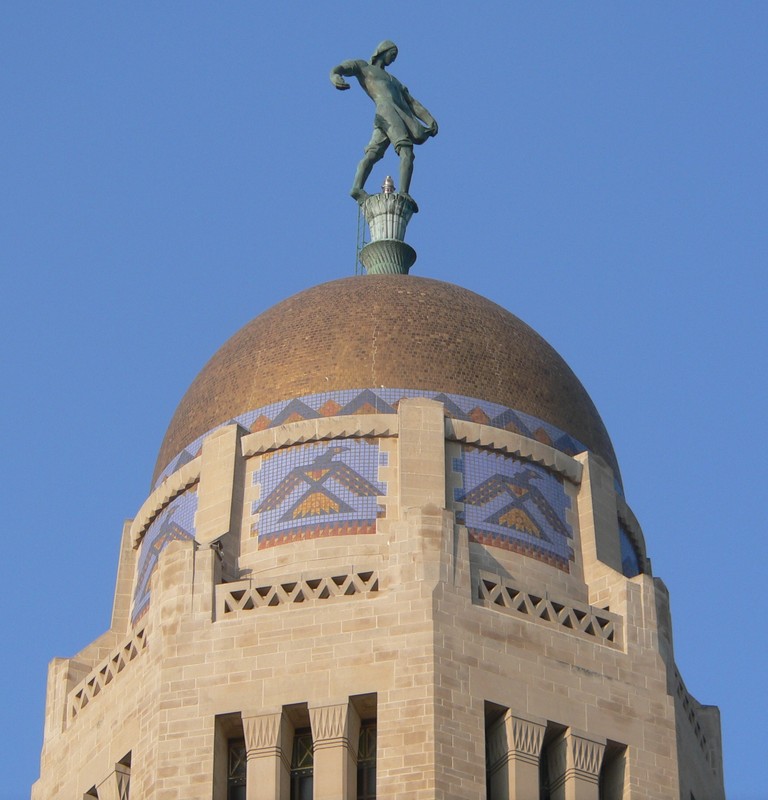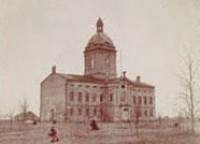Nebraska State Capitol
Introduction
Text-to-speech Audio
Built in ten years between 1922-1932, the Nebraska State Capitol was the country's first vernacular architectural styled state capitol building. It marked a departure from typical designs where state capitol buildings emulated the U.S. Capitol building in Washington D.C. Instead, the architect, Bertram Grosvenor Goodhue, chosen from ten submissions, designed a building with an enormous tower rising to a height of 400 feet, making it the second tallest state capitol in the country after Louisiana's. Atop the tower stands a 19-foot statue called "The Sower," which depicts a man gesturing as if he is planting seeds, honoring the importance of agriculture to the state. The building combines elements of the Gothic Revival, Art Deco, and Classical styles. The Nebraska State Capitol was listed in the National Register of Historic Places in 1970 and became a National Historic Landmark in 1976.
Images
The Nebraska State Capitol was built in 1932 after ten years of construction. The tower rises to a height of 400 feet and is topped with a large statue called "The Sower."

View of Nebraska State Capitol dome with statue "the Sower" in 2012 (Ammodramus)

First state capitol, 1868

Backstory and Context
Text-to-speech Audio
The building nicknamed the "Tower on the Plains" is Nebraska's third official state capitol (there were two territorial capitol buildings before statehood). The first was a two-story structure with a central cupola built in 1868. Unfortunately, poor construction and low-quality stone caused the building to fall apart. The second capitol was constructed in 1888. However, it too was poorly constructed and eventually began to crumble from a failing foundation by 1915. This prompted calls for the construction of the current building.
The building was constructed in four phases, beginning with the north and south portions of the three-story square base, built from 1922 to 1924. This square outer edge of the building was filled in with + shaped wings, leaving four square interior courtyards. Three of the four wings of the + were built from 1925 to 1928. The tower was added in the middle of the + from 1928 to 1930. The fourth arm of the + finished the building in 1932.
Names of all ninety-three counties in Nebraska are inscribed around the top of the building's base. Above the names, twenty-one panels represent the creation of law. Interestingly, the building was originally going to house a law library whose book stacks would be located in the tower. This did not occur, however, and the tower houses offices. Eight sculptures around the base of the tower, visible from the courtyard, represent the ideals of culture.
The interior contains three major spaces - the Vestibule, Great Hall, and Rotunda. The Vestibule's dome features a sun motif in a medallion; four 25-foot columns of red marble with a bull motif in the capitals support the vaulting. A series of bronze busts of famous Nebraskans form the Nebraska Hall of Fame in the Great Hall. Eight winged virtues form a celestial rose in the dome of the Rotunda. A series of designs in the mosaic tile floor of the Great Hall and Rotunda are themed the Procession of Life, from fossils to animals, vegetables, and humans.
A number of hand-painted murals decorate the building's interior. Two were finished in the early years of the building, but the program was suspended when funds ran out. The mural project was revived in the 1950s and 1960s. Another series of murals was finished in 1996, in the Memorial Chamber on the 14th floor. The fourteenth floor is the highest publicly- accessible floor and offers observation decks for spectacular views for miles from 245 feet above the ground. The fifteenth floor is the top of the tower. The Nebraska State Capitol was the tallest building in Nebraska until being surpassed by buildings in Omaha in 1969 and in 2002.
Sources
"History of Nebraska's Capitols." Nebraska State Capitol. Accessed February 27, 2018. http://capitol.nebraska.gov/index.php/building/history/nebraska-capitols.
Pitts, Carolyn. "Nebraska State Capitol." National Park Service - National Register of Historic Places Nomination Form. October 16, 1970. https://npgallery.nps.gov/GetAsset/746e84de-4657-4f0f-96d6-e8004a82cd36.
https://commons.wikimedia.org/wiki/File:Nebraska_State_Capitol_dome_from_NE_1.JPG
